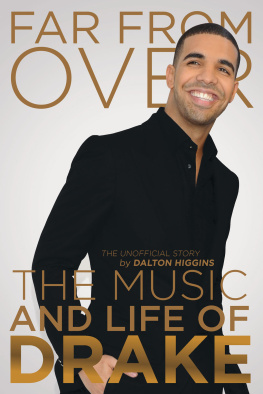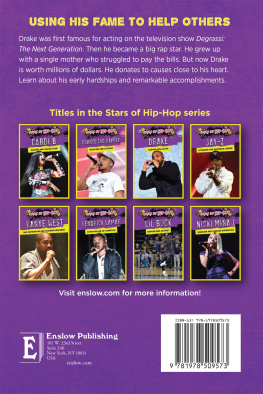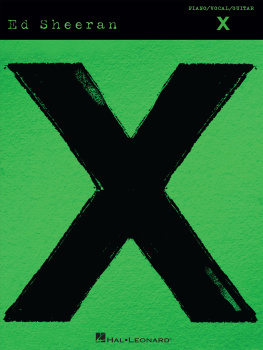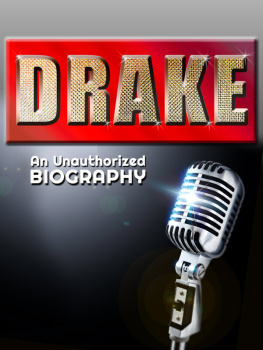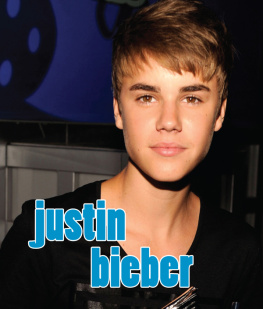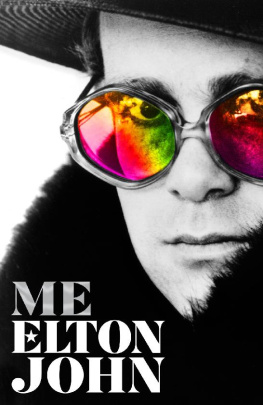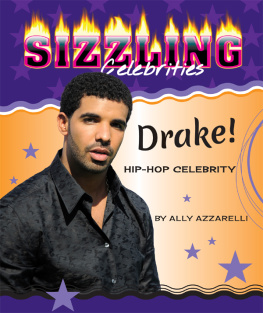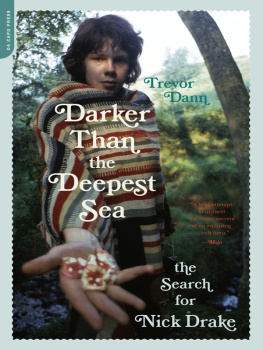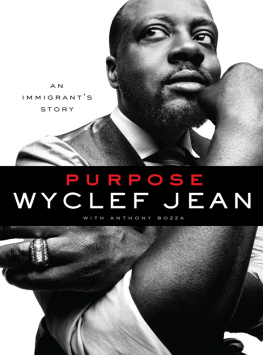To my right hand Karen Bell-Higgins, and my two little (growing) feet, Shiloh and Solomon Bell-Higgins. And my tiny inner village, mom and dad, Pearlita and Josiah Higgins, and my brother, Milton The Mayor.
Introduction
His moment had arrived. It was August 1, 2010, on a warm, overcast summer day in Toronto. I was standing elbow-to-elbow with other reporters, mostly aging hip hoppers and hipsters, part of a deafening audience at the Molson Amphitheatre for a rap concert. But it wasnt just another concert. It was the first large-scale rap gathering hosted by Aubrey Graham, known to the world as Drake, for a new festival he helped birth called OVO (Octobers Very Own). And to those in the know it was his official hometown coming-out party.
If the Grammy nominations and platinum-certified debut album hadnt yet made his influence clear, the enthusiastic crowd of young people chanting his hard-edged yet sensual lyrics word for word certainly spoke volumes. That the concert at the amphitheater a venue with more than five times the capacity of his previous show just over a year earlier appeared sold out, spoke even louder. Torontonians may be better known for their love of home-grown rock n roll and hockey, but today it was proud to celebrate an unlikely hometown hero.
While he looked like a big American rap star, dressed casually in his own OVO-branded varsity jacket, he sounded familiar with his unusual hybrid rap delivery mixing the cadence of the American South with a Toronto intonation. He was speaking directly to a new breed of North American youth a group that is digitally engaged, a lot more hopeful. The audience was a surprising mix a United Nations of teens to 30-somethings who saw something of themselves in the biracial black Jewish kid, raised just a few miles northeast of the amphitheater.
Women vastly outnumbered the men in attendance. While onstage, Drake effortlessly played to his devoted female constituency, once proceeding to kiss an unnamed young lady onstage, as the crowd went wild.
By the end of his 90-minute set of hits from his debut album, Thank Me Later, and his enormously successful mixtapes, just when raging Drake fans could have gone home happy, two of the biggest rap icons of the last 15 years Jay-Z, who many expect to become the first rap billionaire, and Eminem, SoundScans Artist of the Decade (32 million albums sold in the past 10 years) came onstage to do cameos as his special guests. The hot summer day suddenly sizzled, the roar of the crowd took over, the ground seemed to shake. When Jay-Z and Eminem spat their verses from rap anthems Forever and Run This Town, any Drake doubters couldnt help but be swayed. Hogtown had a first-class hip hop artist who was one of their own.
Raised in the tony Forest Hill neighborhood where average houses go for just over $1 million Drake didnt have the hardscrabble childhood of most rap stars. In a CNN interview, Drake tried to explain his unlikely rise to the top: Part of the whole appeal of me as an artist, I did have things that were seen initially as strikes against me, being from Canada, being an actor, being light-skinned, being Jewish, all of these things that I guess in the stereotypical rap world dont really fit the package.
But even as a teen, Drake had his eye on hip hop success: he once wrote in his school yearbook that his favorite expression was bling, bling, and that his goal was to become a break-dancer and singer. Funny when school yearbook projections actually start to come to life. By the time he was 13, Aubrey Graham already knew something about success, having secured a starring role on Canadian cult TV favorite Degrassi: The Next Generation. It was only a matter of time before the driven, talented performer found similar success with his other passions. The hook on his 2011 single Headlines perfectly summed up his rapid ascent.
Drake set himself apart long before he had inked a record deal, releasing most of his early music on the internet and using social media as his primary marketing tool. For an aging music industry veteran born before the 90s like me, Drake made me truly understand, first hand, how the music industry of yesteryear was now officially done like the Nets stay in New Jersey. Another biracial musical wunderkind, Prince, whom Drakes musician uncle Larry Graham Jr. mentored, prophesized the coming of a Drake, almost two decades earlier. The artist used his powers of pop prognostication to predict a day when musicians would have more creative control over their art and would connect directly with their fans. So when Drake nabbed two 2009 Grammy Award nominations for Best Rap Song and Best Rap Solo Performance for his song Best I Ever Had, before even releasing a full-length CD, it seemed Princes prediction had come to pass. By the time soul iconoclast Stevie Wonder agreed to record harmonica parts on Drakes sophomore release, Take Care, and show up as a special guest at his hometown OVO festival, it was clear to fans, industry execs and artists alike that Aubrey Graham was someone who warranted close attention.
As an urban music journalist for the last 15 years, Ive paid special attention to Drake, a kid who grew up in a neighborhood a hop, skip and jump from my own. In 2007, my colleague Urban Music Association of Canada President Will Strickland and I decided to book Drake to perform in an Urban X-Posure hip hop artist showcase for up-and-comers in downtown Toronto, and even as experts in our field, we didnt anticipate how popular hed be.
Harbourfront Centres Brigantine Room venue was completely jammed with Drakephiles (most of them female), and we wondered where exactly this Drake Nation had come from. What stood out for Strickland about Drake is what also continues to amaze me. He was one of the most humble young celebs Id ever met, and Ive met many, from obscure wannabes to Billboard chart-toppers. I remember him sending me the longest, realest text message ever, apologizing for being only four minutes late to the [Urban X-Posure] event audition, remarked Strickland. Only four minutes late. And this is the music business, where things dont exactly run on time. He showed up to the auditions and paid his $25 application fee, and stood in line like everybody else. He could have played the Degrassi superstar-guy role. But he wasnt interested in that. That showed me he respected the process of making it. If you were to apply the textbook definition of success to Drakes entertainment career to date, despite him being only in his mid-20s, its safe to say he is well on his way to making it whatever making it means or that to many he has already made it. Made it cool to dream large and ignore the banal. He just wants to be successful. Growing up, I never expected to live to see a black president. Or a Toronto rapper make it this big in America.
Drake has a tattoo that carries an acronym with the inscription YOLO (You Only Live Once), a new lexicon that he promotes in his song The Motto and that is enjoying wide public use its inscription showed up on Jordan Brand sneakers worn by Brit broadcaster Tim Westwood, and even High School Musical actor Zac Efron has it inked on his right hand. It was an idiom Drake picked up from one of his partners-in-rhyme, Rick Ross, who hes collaborated with on his own solo recordings, and it speaks clearly to his life mission of not being afraid to dream, not being afraid to put himself out there, to go for broke, which is why this biography is just the beginning of Drakes larger-than-life story.
Growing
Up Drake:
Graham Family Values
Aubrey Drake Graham was born on October 24, 1986, the only child to an African-American musician father, Dennis Graham, who lives in Memphis, Tennessee, and a spirited white Jewish educator mother, Sandi Graham, who raised him in Torontos predominantly Jewish Forest Hill neighborhood. She said that though he was very fussy, he was a unique toddler who seemed very comfortable in the spotlight and loved to entertain. We always thought there was something very different about this kid, Sandi admitted to

